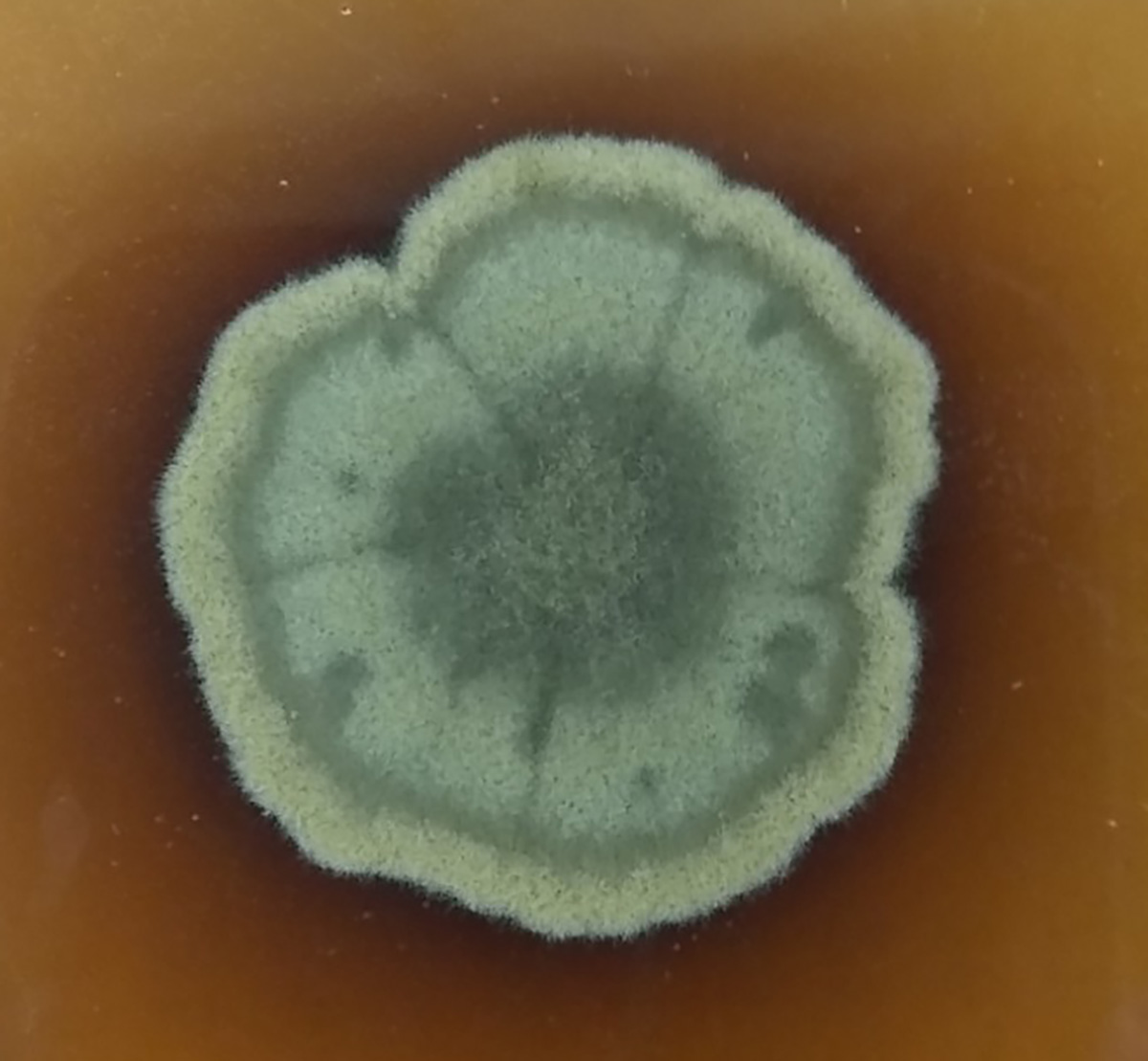
Image Credit: Kathryn Bushley
Within the framework of JGI Community Sequencing Project “Defensive Mutualism of Fungal Root Endophytes of Soybean”, we are investigating the potential role of fungal endophytes isolated from soybean roots in protecting against two root pathogens: 1) the root rot fungus causing Soybean Sudden Death Syndrome (Fusarium virguliforme) and 2) the soybean cyst nematode (Heterodera glycines). These fungi were screened for either anti-fungal or anti-nematode activity in vitro. Genome, transcriptome, and metabolome sequencing will address possible mechanisms of antagonism against these pathogens.
Cladophialophora are a genus of melanized, or “black yeast-like”, fungi that belong to the Eurotiomycete family Herpotrichiellaceae (Braun and Feiler, 1995). The production of melanin may contribute to their resilience against abiotic stress. These fungi are found in diverse environments, including soil, plant materials, and decaying organic matter, yet little is known about their ecological roles. While some species have been shown to be plant endophytes, others within the genus (Cladophialophora bantiana) are opportunistic human pathogens, causing chromoblastomycosis and other skin infections, as well as disseminated and cerebral infections in immunocompetent individuals (Brenner et al., 1996, Jain et al., 2003, Khader et al., 2015). This isolate of Cladophialophora sp. was isolated as an endophyte from soybean roots.
Researchers who wish to publish analyses using data from unpublished CSP genomes are respectfully required to contact the PI (Dr. Kathryn Bushley) and JGI to avoid potential conflicts on data use and coordinate other publications with the CSP master paper(s).
References:
- BRAUN, U. & FEILER, U. 1995. Cladophialophora and its teleomorph. Microbiological Research, 150, 81-91.
- BRENNER, S. A., MORGAN, J., RICKERT, P. D. & RIMLAND, D. 1996. Cladophialophora bantiana isolated from an AIDS patient with pulmonary infiltrates. Journal of Medical and Veterinary Mycology, 34, 427-429.
- JAIN, S. K., AGRAWAL, S. C. & JAIN, P. C. 2003. Subcutaneous phaeohyphomycosis on face caused by Cladophialophora bantiana. Mycoses, 46, 237-239.
- KHADER, A., AMBOOKEN, B., BINITHA, M. P., FRANCIS, S., KUTTIYIL, A. K. & SURESHAN, D. N. 2015. Disseminated cutaneous phaeohyphomycosis due to Cladophialophora bantiana. Indian Journal of Dermatology Venereology & Leprology, 81, 491-494.
